Last Updated on: 4th August 2024, 11:35 pm
While Tulum may be one of Mexico’s most-visited archaeological sites, it’s hardly the largest or most spectacular. But what makes visiting the Tulum ruins truly special is their stunning seaside setting. Out of all the Mayan cities constructed throughout Mesoamerica, this is the only one built on a cliff overlooking the water.
Tulum functioned as a port city from around the 8th century, and goods from the Pacific and Gulf Coasts, Central America and as far away as Central Mexico were traded here.
At the time, nearby Cobá was the major power in the region, but it’s unclear if Tulum was ever part of its empire.
In ancient times, Tulum was known as Zama, which means ‘dawn.’ Not only could residents view a spectacular sunrise each morning, but the city was also dedicated to Venus, or the ‘morning star,’ which was highly important in Mayan astronomy and religion.
Tulum’s zenith of power came quite late in Mayan history, with it only becoming a dominant city from around the year 1200 AD, right after Chichén Itzá‘s decline. And it remained a major economic and political powerhouse for the next few centuries, as evidenced by Tulum-style structures built atop the older pyramids of Cobá.
When explorers John Lloyd Stephen and Frederick Catherwood visited the site in 1841, Tulum’s structures were still covered in bright paint – both inside and out. But by the time research resumed in the mid-20th-century, many of Tulum’s vivid murals had already faded.
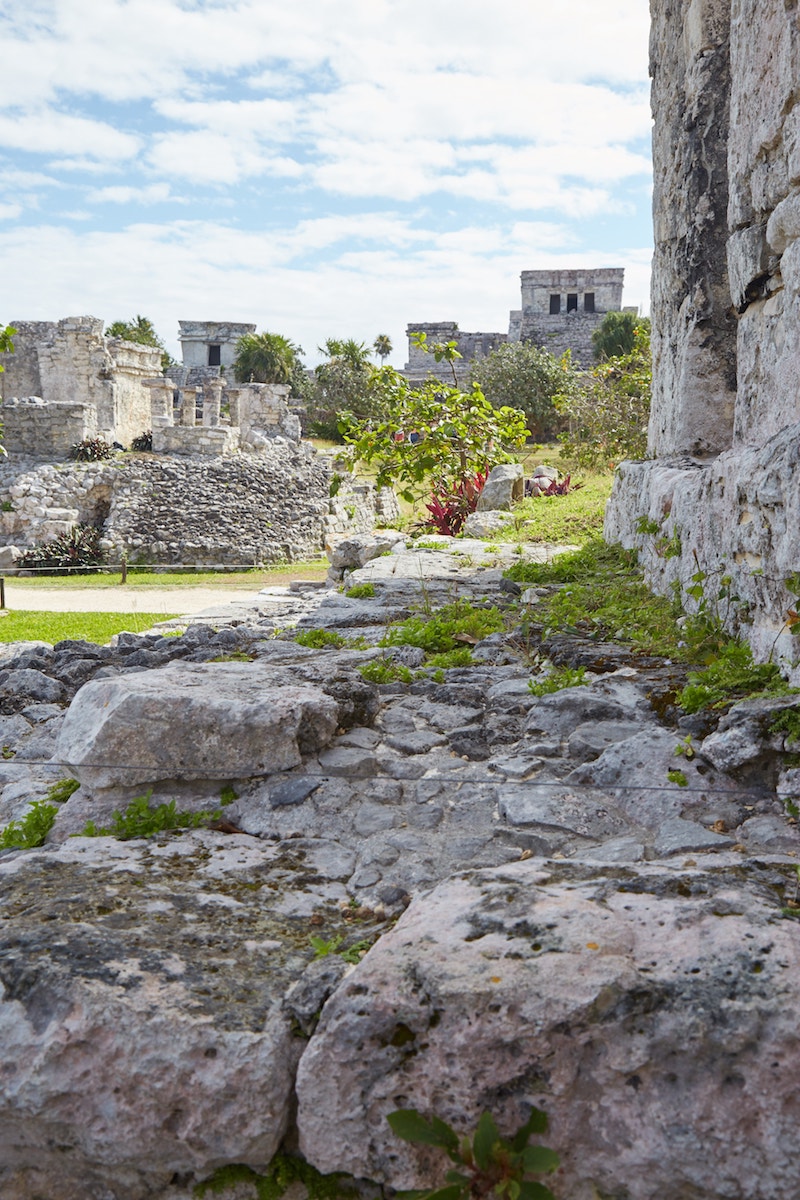
Visiting the Tulum Ruins
Visiting Tips
At the time of writing, entry to the ruins costs $80 MXN, while the site is open daily from 9:00-16:00.
The Tulum ruins receive thousands of visitors each day, so arriving early is essential to beat the crowds. The sun, however, will be right behind the structures in the morning, which isn’t ideal for photography. Therefore, coming a couple of hours before closing might also be a good idea.
Those visiting from either central Tulum or the beach area will need to take one of the local colectivos (minivans) which run back and forth along the highway between the two areas. Make sure to tell the driver you want to visit ‘las ruinas’ or the ‘zona arqueológica.’
Getting dropped off, it’s still about a 15-minute walk to the entrance. You’ll find an Oxxo convenience store along the way if you want to pick up water or snacks.
Also expect to meet some people who appear to be official staff offering you boat rides or guided tours. If you’re not interested, just keep on walking.
Upon arrival, don’t be surprised to find a long line outside, as this is one of Mexico’s most-visited archaeological sites. If you’re considering visiting with a guide, this would allow you to skip the queue.
Even as crowded as the Tulum ruins get, many of the structures are roped off, meaning you can appreciate them without any other people in the way.
Visiting the Tulum ruins can be done in tandem with a trip to the beach just below them. There are no changing rooms on-site, however, so it’s best to come with your swimwear under your clothes.
Learn more about accommodation and transport to Tulum further below.
Upon purchasing your ticket, you’ll have to walk up a fairly long path to make it to the main entrance. If you’re lucky, you may even spot some coatis in the forest nearby! These cute and mischievous animals, a member of the raccoon family, can be found all throughout Latin America.

Most of those visiting the Tulum ruins enter through the old defensive wall, though you also have the option of entering near the ‘House of the Cenote’ (more below).
Around 600 people once lived within the walled area that now makes up the archaeological site. These people all belonged to the elite class, while the commoners lived in the surrounding area outside.
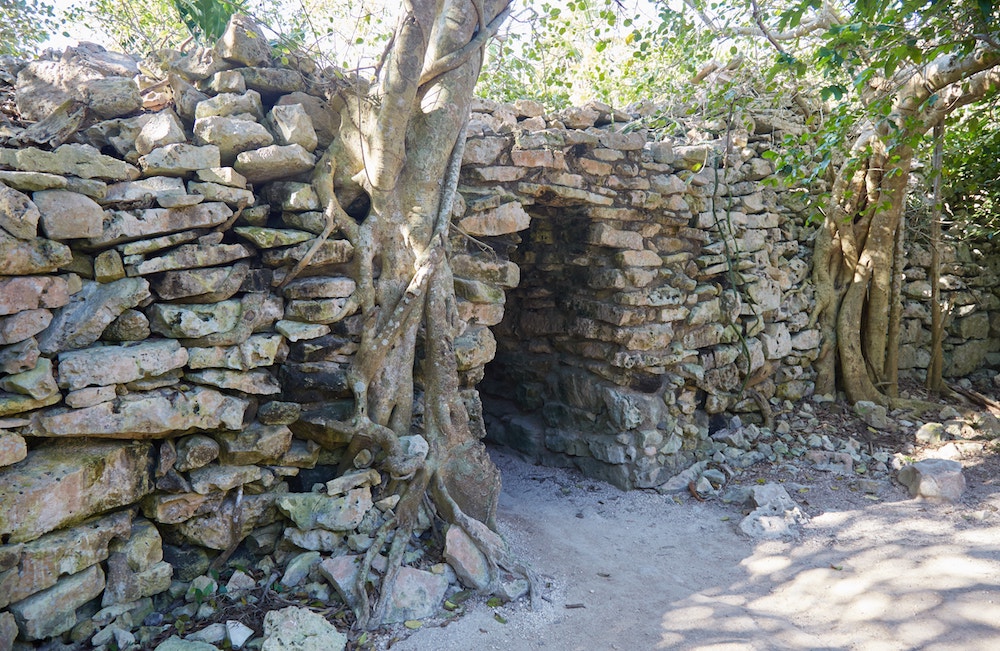

The wall served a dual function: practical defense, and the symbolic border between the sacred and the profane realms. It contained five entrances while the entire cliffside area remained open, as the cliff offered natural protection.

Overall, the archaeological site isn’t that large (at least when compared to Chichén Itzá) but there are multiple different paths you can take when visiting the Tulum ruins.
There are two main north-south paths which cut through the middle of the site, along with a trail running along the cliffside. If you start by heading south down the westernmost path, you’ll soon encounter the Palace of the Great Lord, also known as Structure 21.


Featuring four rooms and a long row of columns out front, it was home to the Halach Uinic, or Great Lord of Tulum and his family. Notice how it was mostly built of stone, in contrast to the now-lost wooden houses built for those of a slightly lower status.
Continuing south, you’ll pass by another stone building with columns, simply known as ‘Casa de las Columnas.’ It features a carving of the ‘Descending God’ (more below) above its entrance.
Further south still is one of Tulum’s most important buildings, the Temple of the Frescoes.
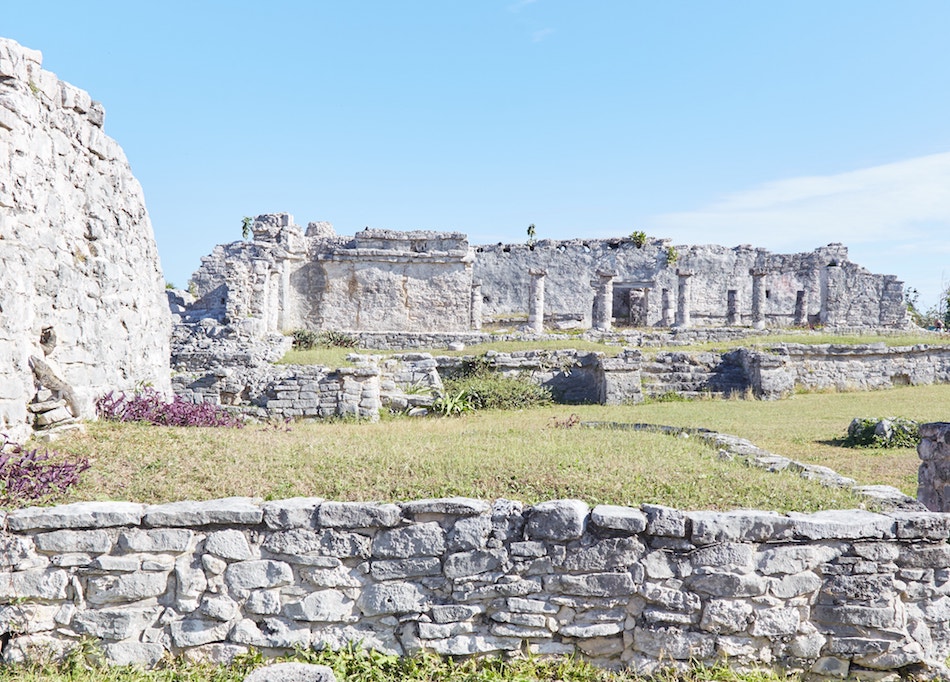



This is a two-story building in which the bottom floor consists of one temple within another. You’ll find niches above the doors of both stories featuring carvings of the Descending God and various other deities. The inside walls, meanwhile, were covered with red and blue murals which have largely faded.
And just across it is the House of Chultun. Chultuns were water storage chambers that the Mayans would dig out to collect rainwater. Notice how the platform next to it is empty, though it once would’ve supported a wooden house with a palm roof.
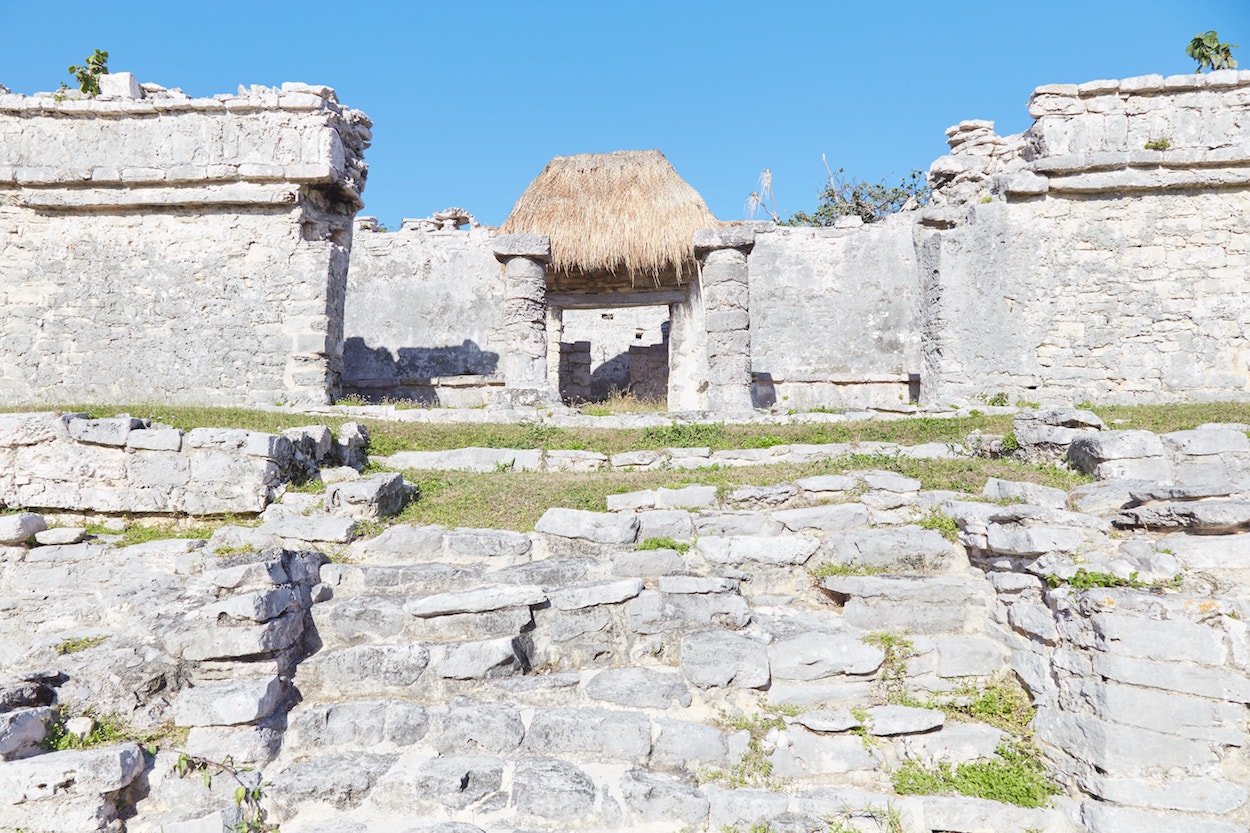
Before heading to the cliffs, first take a moment to appreciate the view of the whole city from the hill to the west. It was from here that Tulum’s residents could observe important celestial phenomena a couple times a year.
For example, during the summer solstice, the sunrise would shine right through the opening of the Temple of the Descending God, shining light on a corner of the Casa de Las Columnas. And in the winter, the light would shine through the same hole onto a corner of the Palace of the Great Lord.
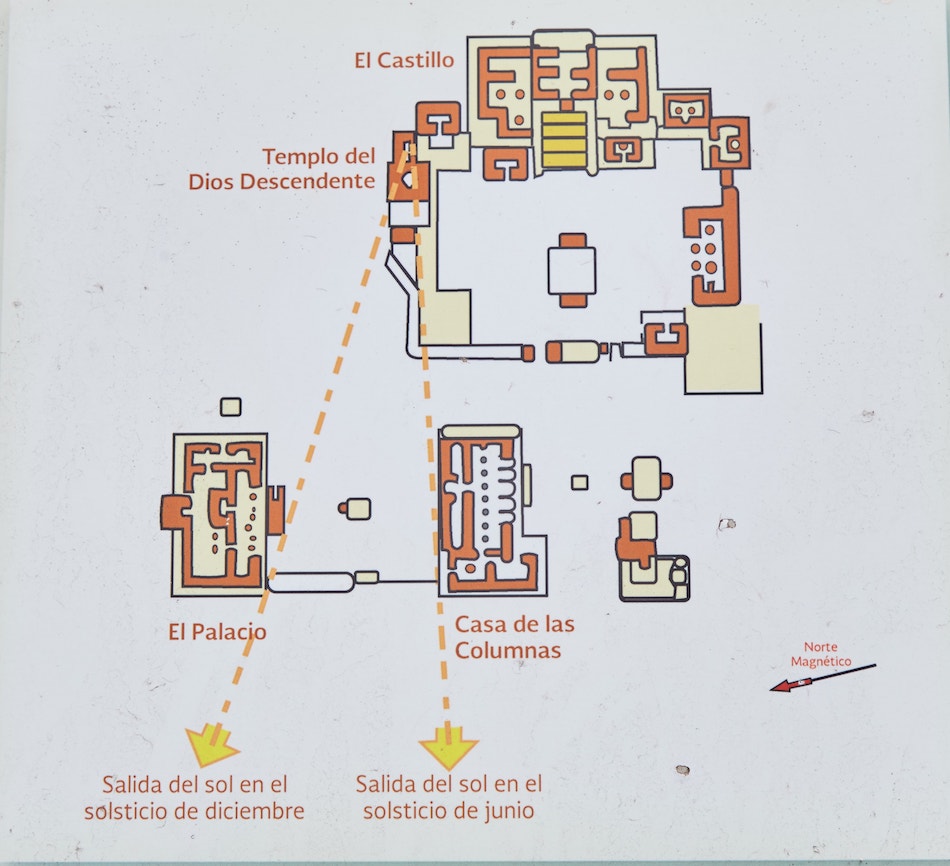
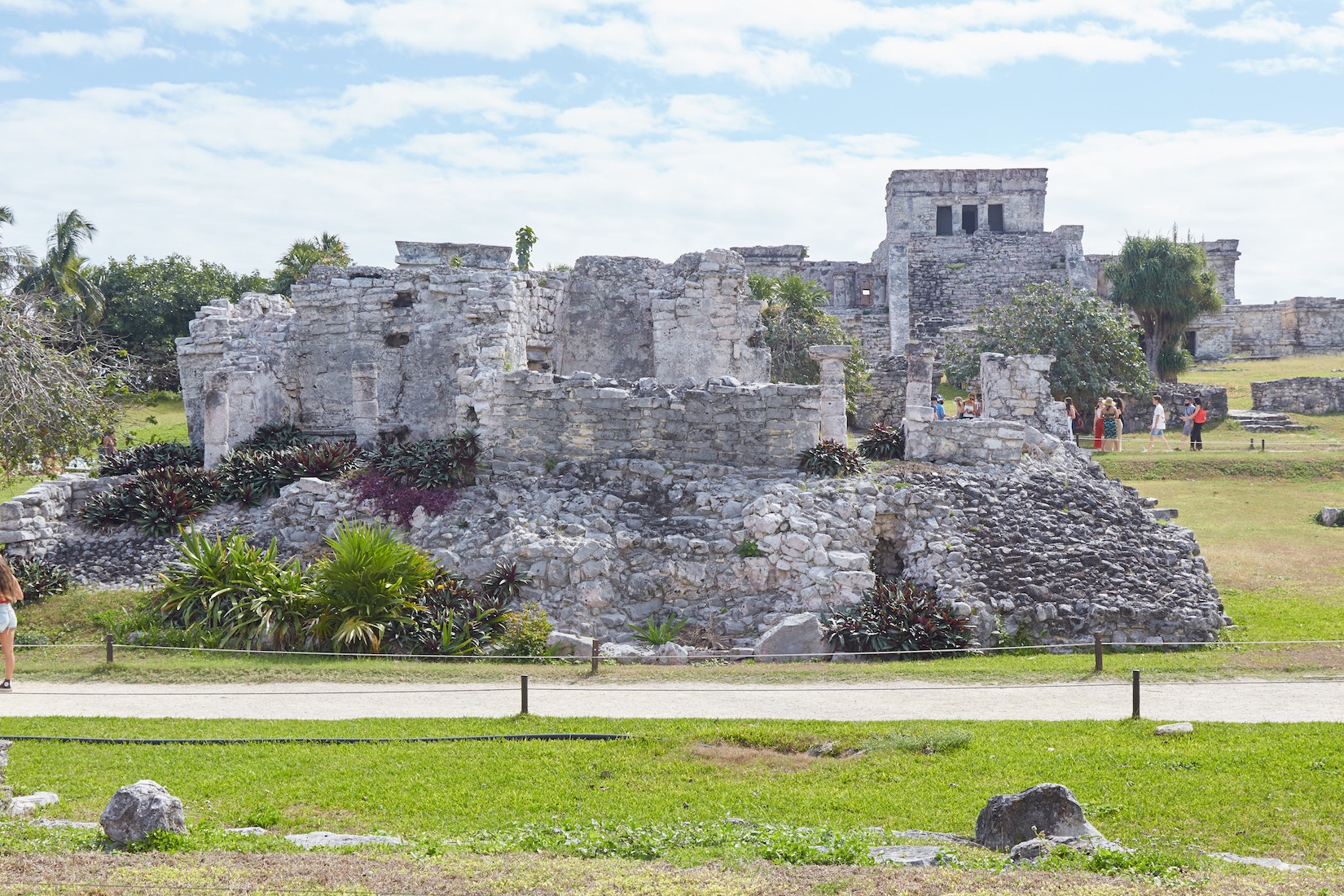
Walking straight ahead, you’ll encounter Tulum’s most prominent structure and the archaeological site’s focal point, El Castillo. It once would’ve been painted in bright colors and decorated with sculptures, but it still appears impressive even with its decorations missing.
The uppermost structure is where Tulum’s most significant religious ceremonies would’ve happened, while there are also two smaller temples on either side of the staircase. The extant structure was built over an older, smaller temple at some point.

In front of El Castillo are a series of smaller buildings that also served some type of religious function. But with the whole area roped off, it’s no longer possible to get a close look.
One of these is now dubbed the ‘Temple of the Stele,’ named after a stele found inside from as far back as the 6th century AD.
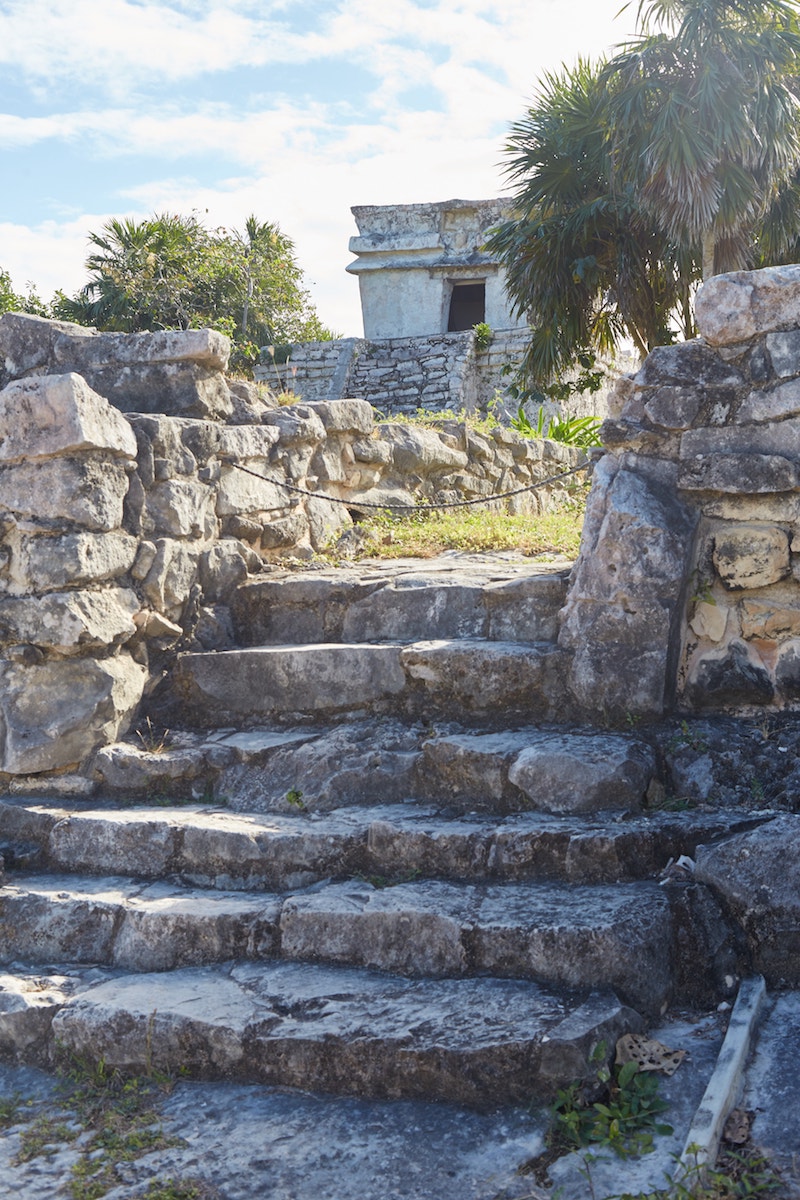
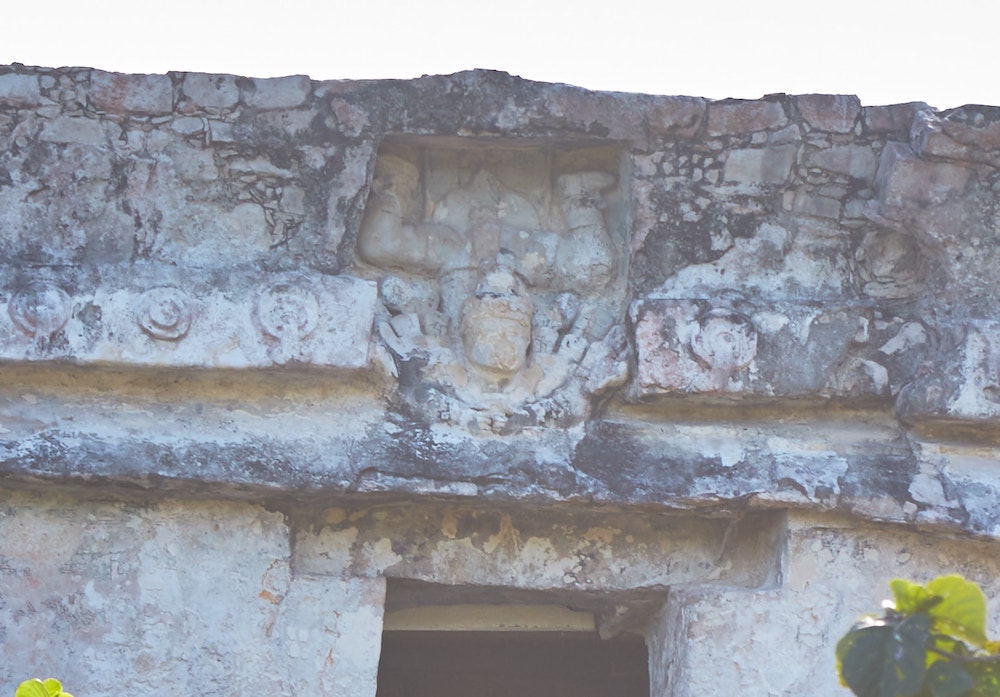
Just to the north of El Castillo is the Temple of the Descending God – a small yet significant structure. But just who, or what, was the Descending God?
Typically depicted upside down, as if diving from heaven to earth, the true identity or significance of this deity remains an enigma. But he may have represented the god of bees, Ah Muu Zen Caab. Honey, in fact, was one of the main goods traded at Tulum.
Notably, the Descending God only appears at three other Mayan sites: Cobá, Chichén Itzá and Sayil. But it’s featured at Tulum more prominently than anywhere else.



Next, continue north along the coast to enjoy what’s arguably the highlight of visiting the Tulum ruins: the views. As mentioned above, there’s no other Mayan site from which you can enjoy such views of the sea.
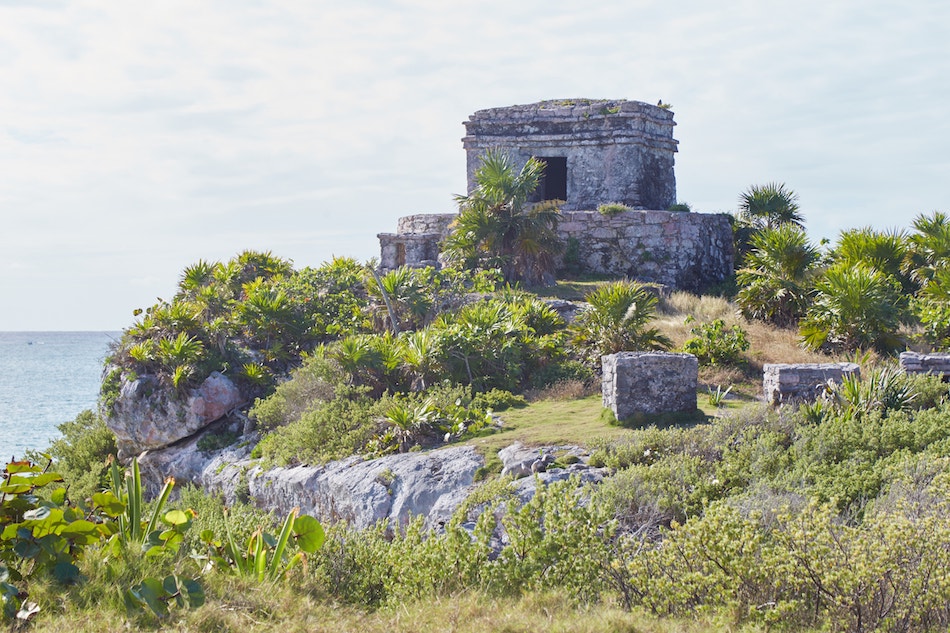

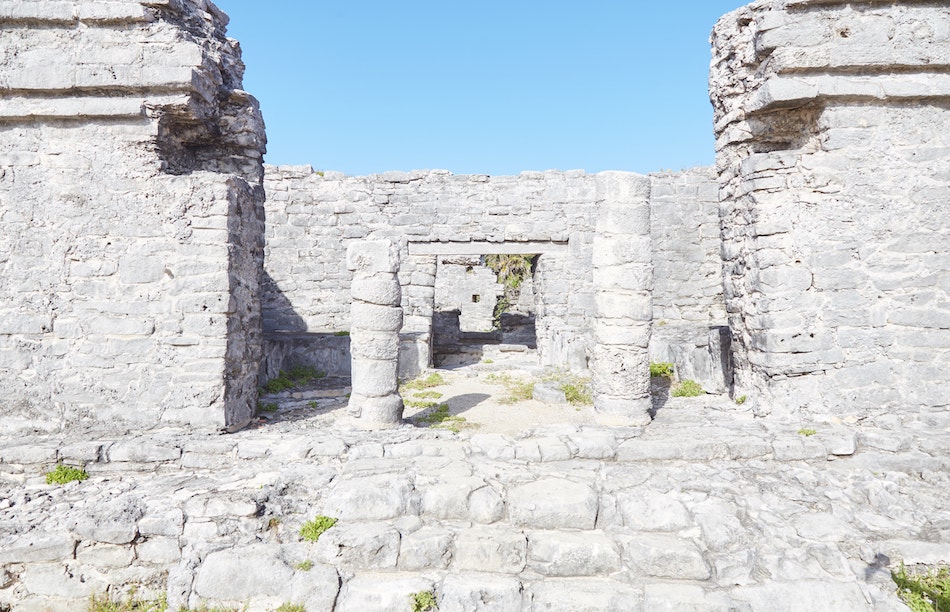
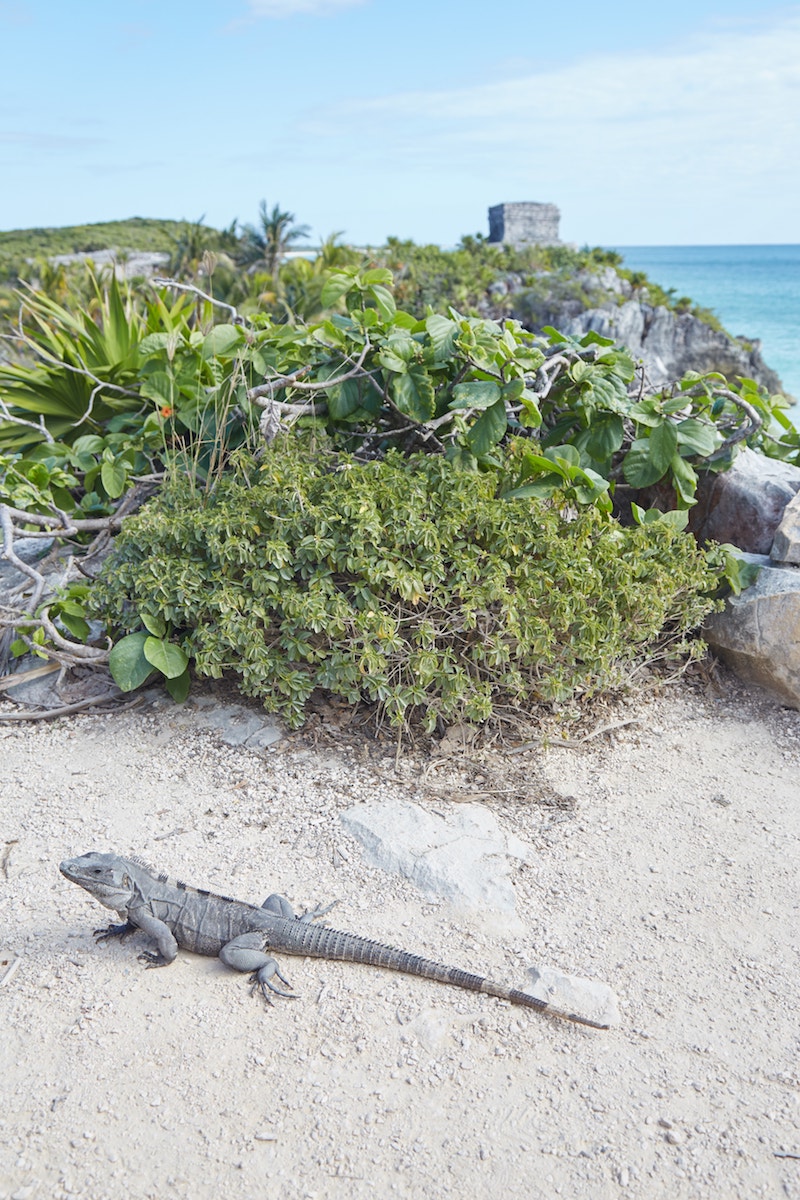
Continuing north along the cliffs, you’ll encounter a few more small structures, one of which was known as Temple of the Wind God. The name is a reference Kukulkán, or the Plumed Serpent, worshipped all throughout Mesoamerica.
Known elsewhere as Quetzalcoatl, the deity only became prominent among the Maya during the Postclassic period, or from around 1000 AD. Interestingly, the structure’s platform is circular when seen from above – a symbol of the wind.
And at the far northern end of the site is the House of the Cenote, built over a natural sinkhole from which the Mayans could extract groundwater. Cenotes also symbolized the underworld, which explains why a tomb was discovered beneath the building. But modern visitors can’t get close enough to see very much.
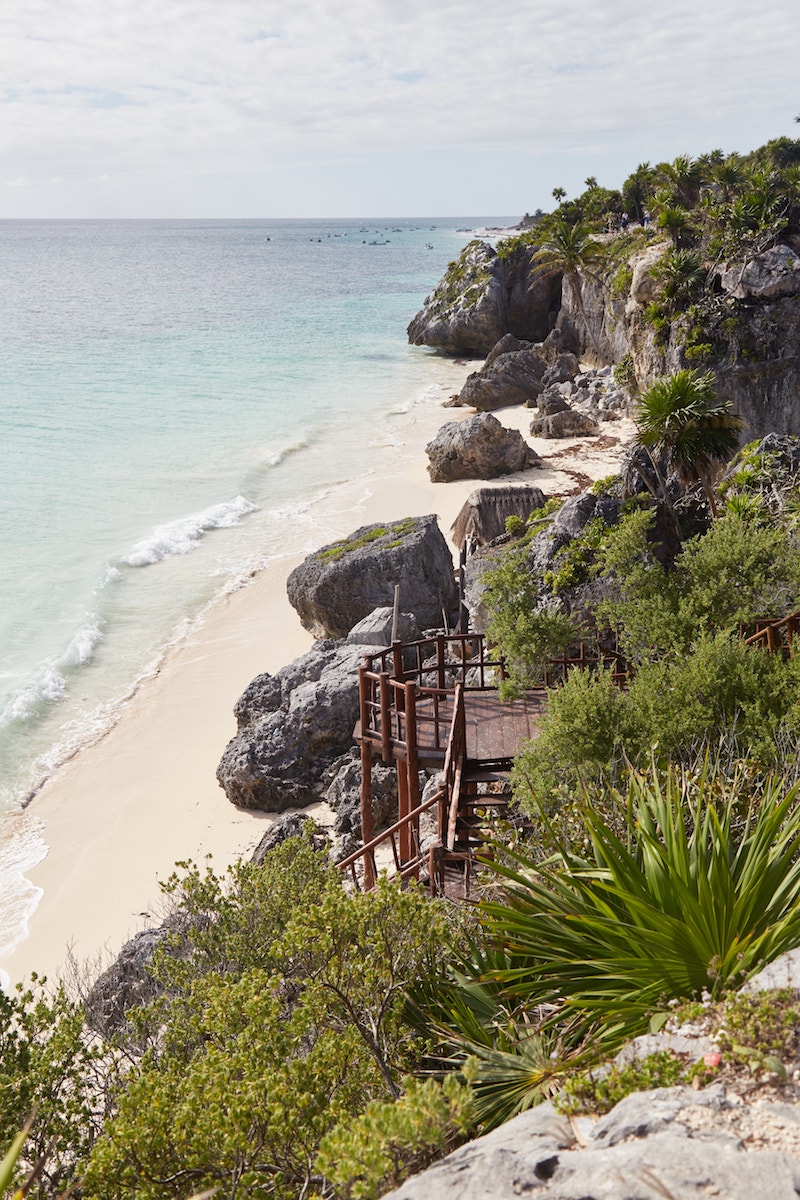
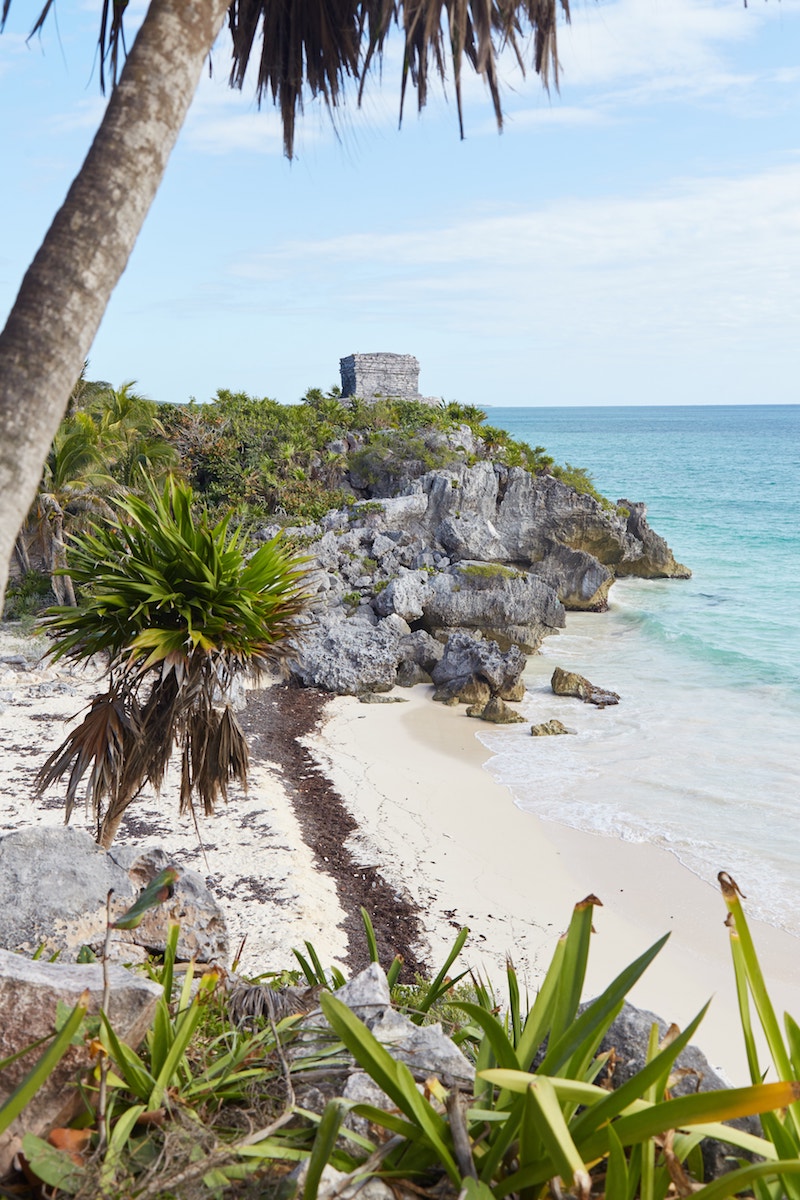
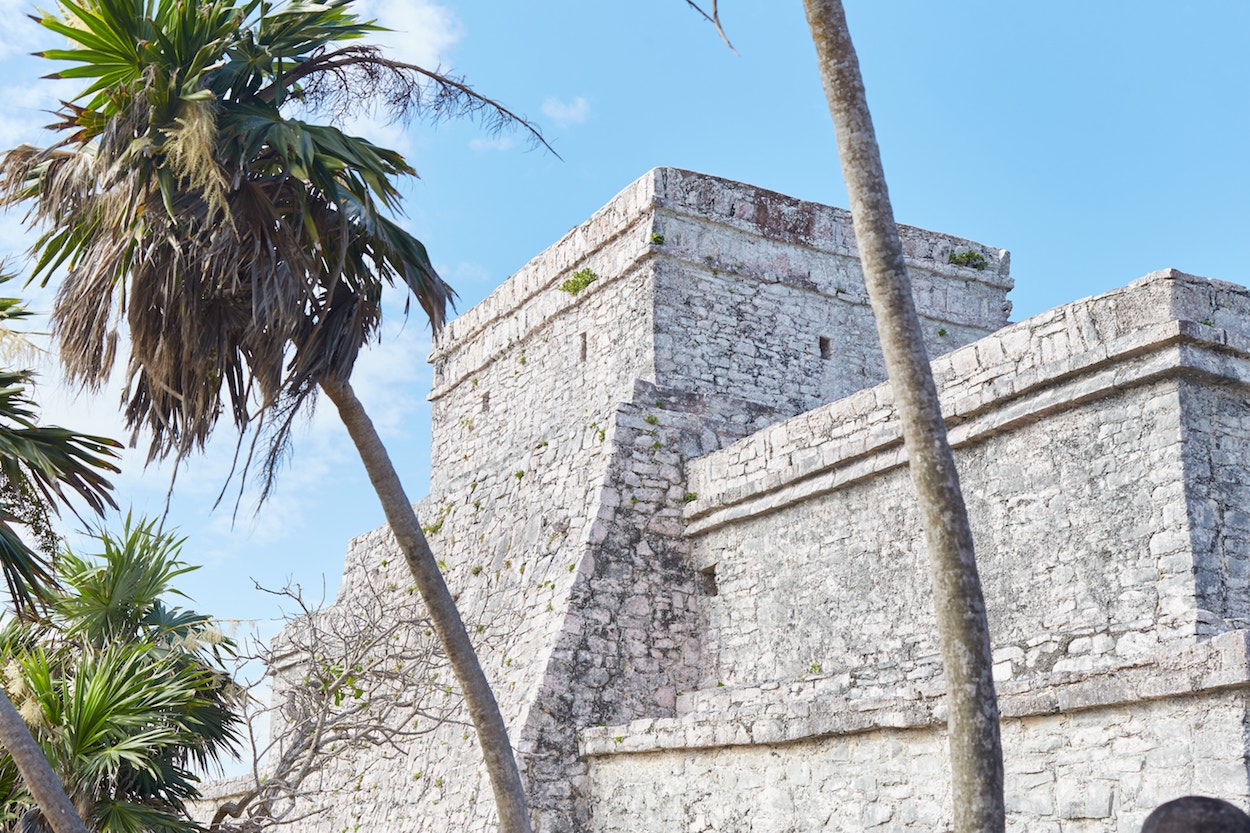
Continuing south along the cliffs will gradually lead you toward the exit. But you’ll want to take things slow and stop repeatedly for photo ops.
It’s also around here that you’ll find the staircase leading to the beach, which is normally open for swimming. This wasn’t possible at the time of my visit, however, as sea turtles had come to lay their eggs, as they do every year.
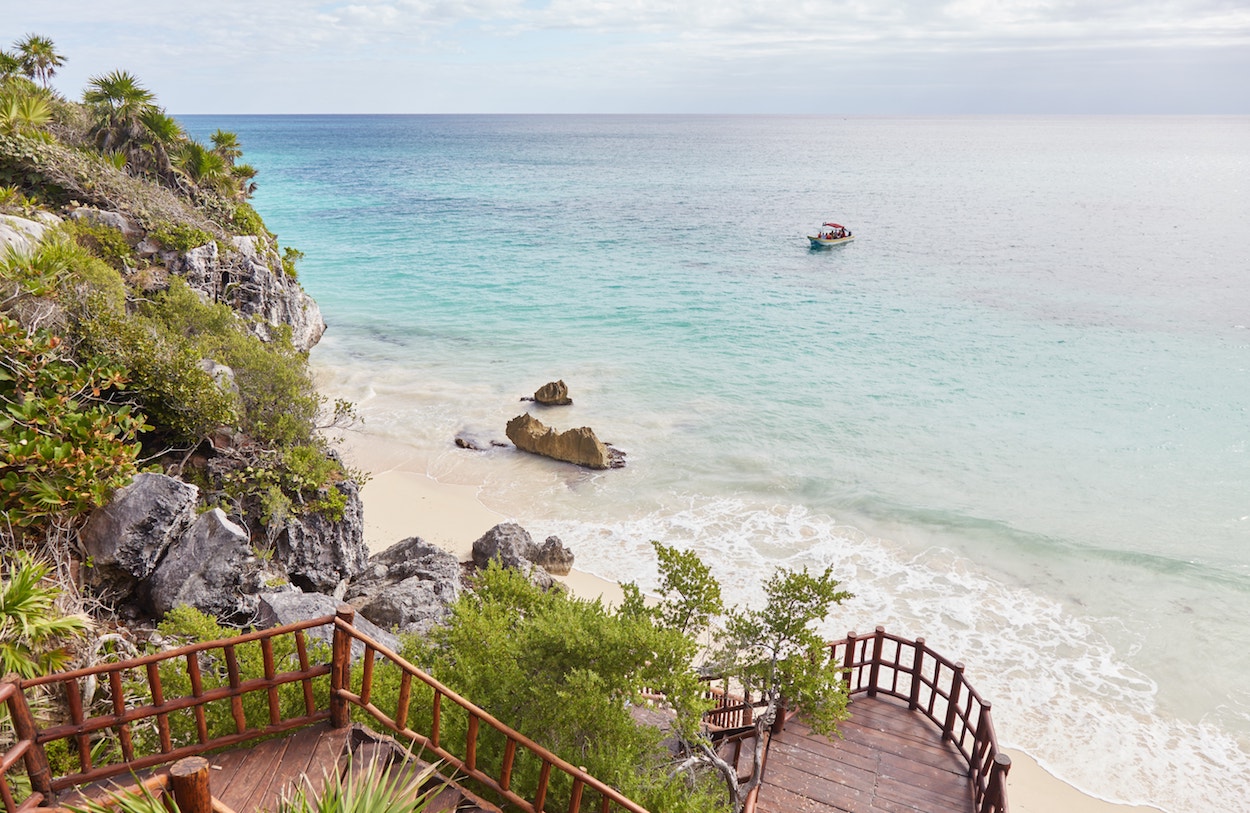
As is the case at many Mayan sites, you’ll also encounter plenty of iguanas, some of whom will be more than happy to pose for a photo or two.

Make sure to turn around one last time for a perfect view of the beach, Tulum’s turquoise water and a view of El Castillo in the distance. The only problem is that dozens of other people come here with the same idea.

One of the last landmarks you’ll encounter before reaching the staircase to the exit is a tiny structure known as the Temple of the Sea.
And while hardly noticed by most visitors, just past the exit you can spot an ancient watchtower that Tulum’s guardsmen would’ve used to scope out their surroundings.
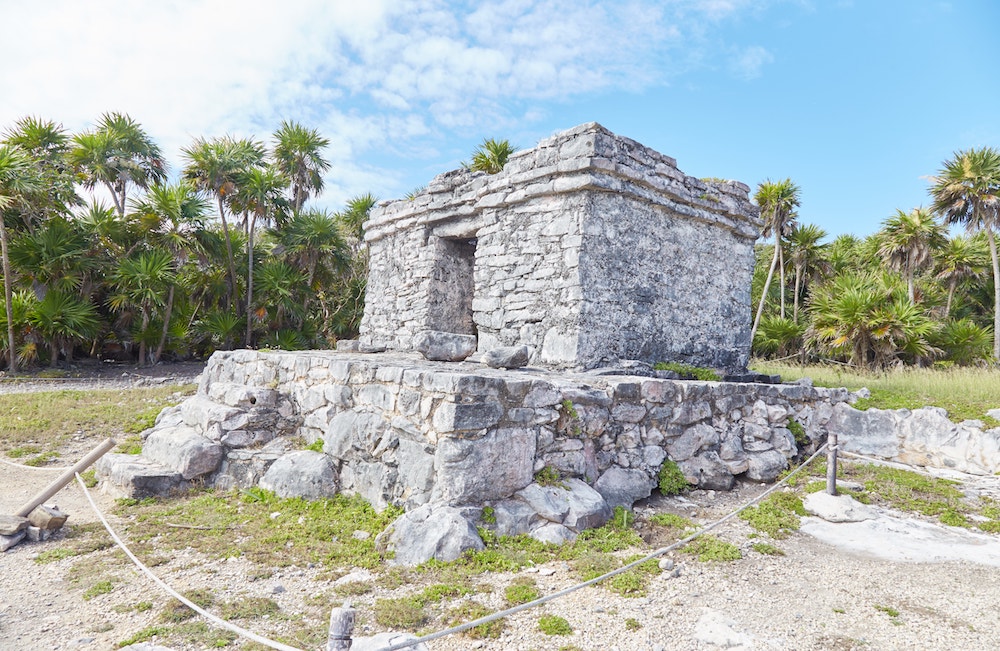

Additional Info
Tulum is well-connected with the nearby cities of the Yucatán Peninsula. You can easily catch a bus from cities like Cancún, Playa del Carmen or Valladolid. There’s even a direct bus running directly from Cancún International Airport which takes about two hours.
If you’re on a budget and don’t have much luggage, colectivo vans are also available from Playa del Carmen.
Tulum, along with nearby Playa del Carmen, is fast becoming one of Mexico’s popular (and pricey) tourist destinations. But unlike PDC, where the town and the beach are all in the same area, Tulum’s city center and beach are two separate districts.
You’ll find plenty of accommodation options in both areas, though they’re all quite expensive by Mexican standards. To get back and forth, regular colectivos run along the main Avenida Tulum for around 30 pesos per ride.
For those wanting to stay near the beach, a popular, yet pricey, option is the luxurious Hotelito Azul. If you’re looking to spend less, consider the highly-rated Camp Ikal Tulum.
You’ll save money by staying in the city center at a hotel like WishTulum or Los Arcos Hotel.
In my case, I was looking for a place that was also near Cobá. And being a budget traveler, I found a place that looked perfect for my needs: Hotel Palma Real, situated exactly between Tulum and Cobá in the village of Francisco Uh May.
I had my own private room with a private bathroom for around $385 MXN per night (including VAT) – much cheaper than similar hotels in the city. The problem was, however, that getting around was much more difficult than I anticipated. Learn more here.
During a later visit to the region, I realized that another archaeological site known as Muyil is also easy to reach via public transport from central Tulum. Therefore, I’d recommend most ruins lovers stay at least two full days in Tulum to try and visit the three main archaeological sites.
While visiting the Tulum ruins is fairly straightforward, getting to Cobá can be a real hassle. As such, you may want to consider this tour which takes you to both Cobá and the Tulum Archaeological Zone on the same day, combined with a visit to a cenote.
